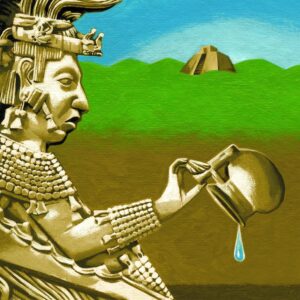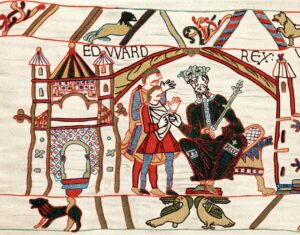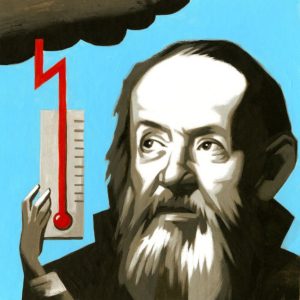From ancient Mesopotamia to the California desert, people have struggled to bend earth’s most plentiful resource to their will
January 21, 2022
In “Chinatown,” Roman Polanski’s classic 1974 film noir, loosely based on the events surrounding the diversion of water from the Owens Valley to Los Angeles in 1913, an ex-politician warns: “Beneath this building, beneath every street, there’s a desert. Without water the dust will rise up and cover us as though we’d never existed!”
The words resonate as California, indeed the entire American West, now enters the third decade of what scientists are terming a “mega-drought.” Water levels at Lake Mead in Nevada, the nation’s largest reservoir, and Lake Powell in Arizona, the second-largest, have dropped to historic lows. Earlier this month, the first ever federal water restrictions on the Colorado River system came into effect.
Since the earliest civilizations emerged in the Fertile Crescent in the Middle East, humankind has tried to master water resources, only to be brought low by its own hubris and nature’s resistance to control.
The Sumerians of Mesopotamia, builders of the first cities, created canals and irrigation systems to ensure that their crops could withstand the region’s frequent droughts. Competition between cities resulted in wars and conflicts—leading, around 2550 B.C., to history’s first recorded treaty: an agreement between the cities of Lagash and Umma to respect each other’s access to the water supply. Unfortunately, the Sumerians didn’t know that irrigation must be carefully managed to avoid pollution and excessive salinization of the land. They literally sowed their earth with salt, ruining the soil and ultimately contributing to their civilization’s demise.
Water became a potent weapon in the ancient world. Invaders and defenders regularly poisoned water or blocked it from reaching their foes. When Julius Caesar was under siege in Alexandria in 47 B.C., Ptolemy XIII contaminated the local water supply in an effort to force the Romans to withdraw. But the Romans managed to dig two deep wells for fresh water within the territory they held.

ILLUSTRATION: THOMAS FUCHS
Desiccated ruins of once-great cities can be found on almost every continent. The last emperors of the Classic Maya civilization on the Yucatán Peninsula, 250-950 A.D., couldn’t overcome a crippling drought that started around 750 and continued intermittently until 1025. As the water dried up, Mayan society entered a death spiral of wars, famine and internal conflicts. Their cities in the southern lowlands were eventually reclaimed by the jungle.
In Southeast Asia during the 14th and 15th centuries, one of the most sophisticated hydraulic systems of its time couldn’t save Angkor Wat, capital of the Khmer Empire, from the double onslaught of droughts and floods. The city is now a haunting ruin in the Cambodian jungle.
Modern technology, from desalination plants to hydroelectric dams, have enabled humans to stay one step ahead of nature’s vagaries, until now. According U.N. and World Bank experts in 2018, some 40% of the world’s population struggles with water scarcity. Water conflicts are proliferating, including in the U.S. In California, Chinatown-type skullduggery may be a thing of the past, but tensions remain. Extreme drought in the Klamath Basin along the California-Oregon border has pitted communities against one another for decades, with no solution in sight.
In 1962, President John F Kennedy declared: “Anyone who can solve the problems of water will be worthy of two Nobel Prizes—one for peace and one for science.” We are still waiting for that person.







